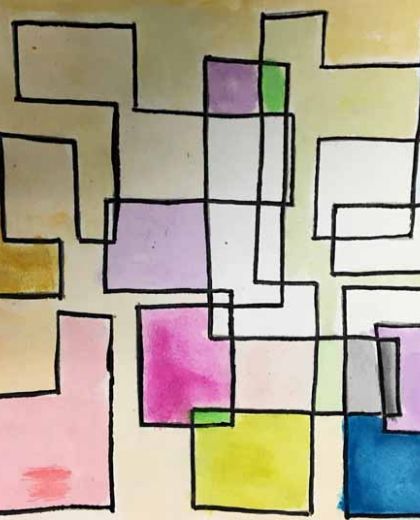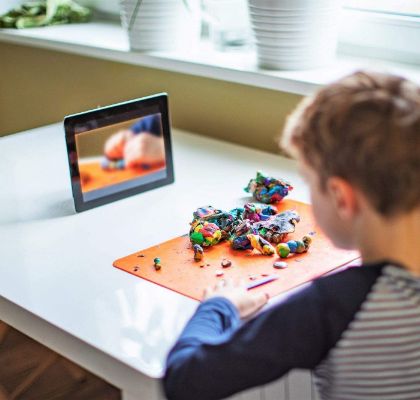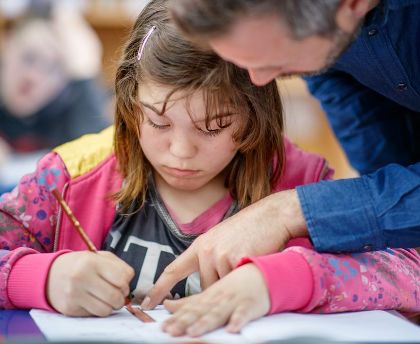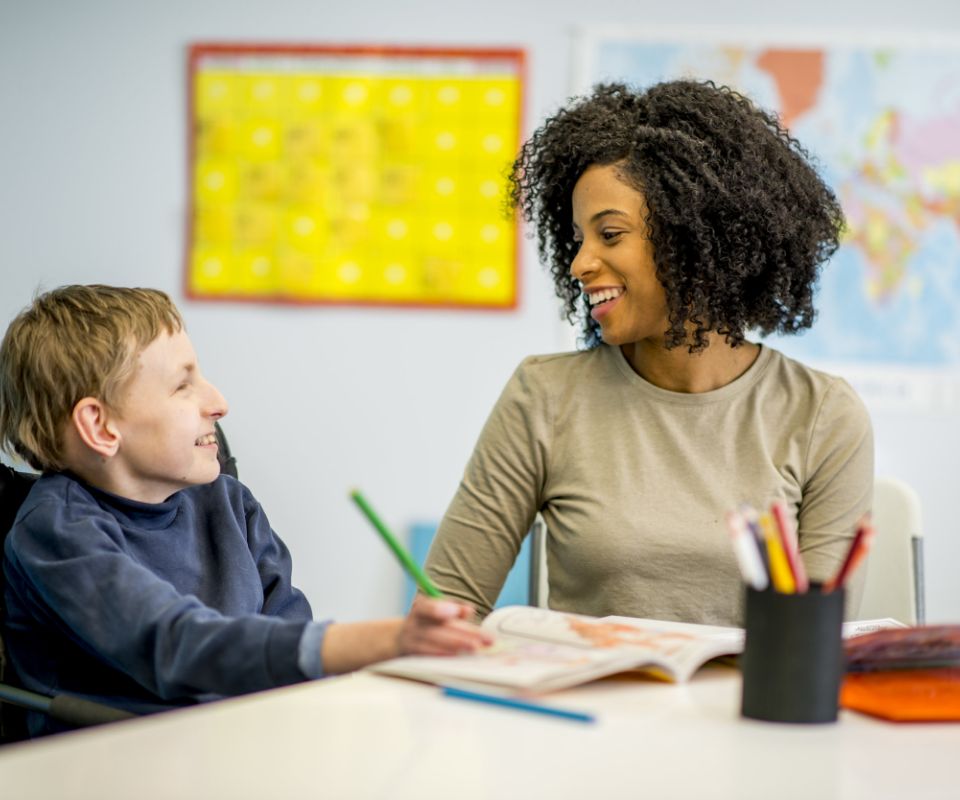Kindergarten - 6th Grade
Arbor School of Central Florida's K-6 School uses a sensory-based classroom approach for our students with Autism, dyslexia and other learning disabilities, ADHD, Down Syndrome, and other diagnoses. Your child will receive an individualized curriculum that allows them to progress and learn. In addition to highly personalized academics, students receive (as needed):
Academics
K-6 students are placed in classes that meet their level of support, social skills, age, and academic levels. By carefully placing students into homogenous classrooms, the teachers can better meet the needs of the whole class, assuring that no one is left behind. Class size is small, with a 1:4 to 1:6 ratio of small-group learning. Arbor School does not accept students who exhibit aggressive behavior toward themselves, others, or property.
At Arbor School, teachers utilize technology and direct instruction for engaging and exciting instruction. Students learn through Universal Design (see below), Project-Based Learning, and STEAM through hands-on and visual methods. Arbor School recognizes that technology is the future of our students and that they will be pursuing careers that are STEAM-related, many of which still need to be developed. Our students can learn programming, 3-D printing, digital art, and traditional art classes.

Greenspan Floortime & Sensory Integration
Arbor School relies on the Greenspan Floortime model coupled with Sensory Integration to help our students gain the communication and social skills needed to be successful. These models rely on trust, strong relationships, and meeting each child at their developmental level.
Meeting the child at their developmental level assures that demands are not above or below their ability, reducing stress and anxiety levels. When the stress and anxiety decrease, the student is better able to learn and progress. Higher demands are placed on the student as they can manage them.
STEAM
Arbor School recognizes that technology is the future of our students and that they will be pursuing careers that are STEAM related, many of which have not been developed yet. With that, each child’s individualized learning plan includes a blend of direct instruction, hands-on learning, and STEAM. Our students have the opportunities to learn programming through robotics and game development, CAD and digital drawing through the use of 3-D printers and laser etching.

Project-based Learning & Universal Design Learning
Universal Design Learning is a tremendous tool that allows all students to learn and share what they know in ways that make sense for them.
UDL is based on three domains: (CAST. http://udlguidelines.cast.org). Affect Networks which is why we are learning this. Student engagement in the learning process is crucial, with many different ways to engage students and keep them engaged. Some students work best in groups with flashy lessons, while others prefer a quiet routine. Providing many different ways to engage the students will keep them engaged and learning. For our students, engagement is critical.
Representation Networks are the what of learning. Students all learn differently, either auditory, visually, or hands-on. Some students will learn a concept fast, while others will take longer and need multiple learning methods before mastering the skill. Lessons that are presented using many strategies will assure students will be allowed to learn. A vast majority of our students are visual, hands-on learners. As a direct result, nearly everything we do with the students is taught using one of these methods through the use of multimedia, activities that incorporate movement (sight words on scooters), building atoms from Styrofoam, or learning math facts through music are just some of the ways we help meet the learning styles of our students.
Action and Expression are how learning focuses on how students organize and express their ideas and requires a great deal of practice and organization. Students should be given multiple ways to share their knowledge, whether with essays, speeches, presentations, or videos. Students who do not test well can show their understanding through posters, skits, videos, or other methods.
Using UDL in the classroom allows all students to learn, grow, and be successful.

Schedule Snapshot
The school day begins with a PE class to get the students ready for the start of the day during homeroom. After the warm up, the learning starts with first period classes in the scheduled subject. The primary program stays within one classroom throughout the day, while the middle school rotates into the classes for each subject. During the day, the children will attend varying subjects from the basics such as math, science, and reading but will also learn through therapeutic activities and social interaction.
Individually-Tailored Learning Experience
These components are utilized in combination to help your child with their learning abilities, social skills, and language skills. A typical learning experience at our school also includes:
- Small Classroom Size
- Small Group Instruction
- Hands-on Learning
- Sensory and Movement




